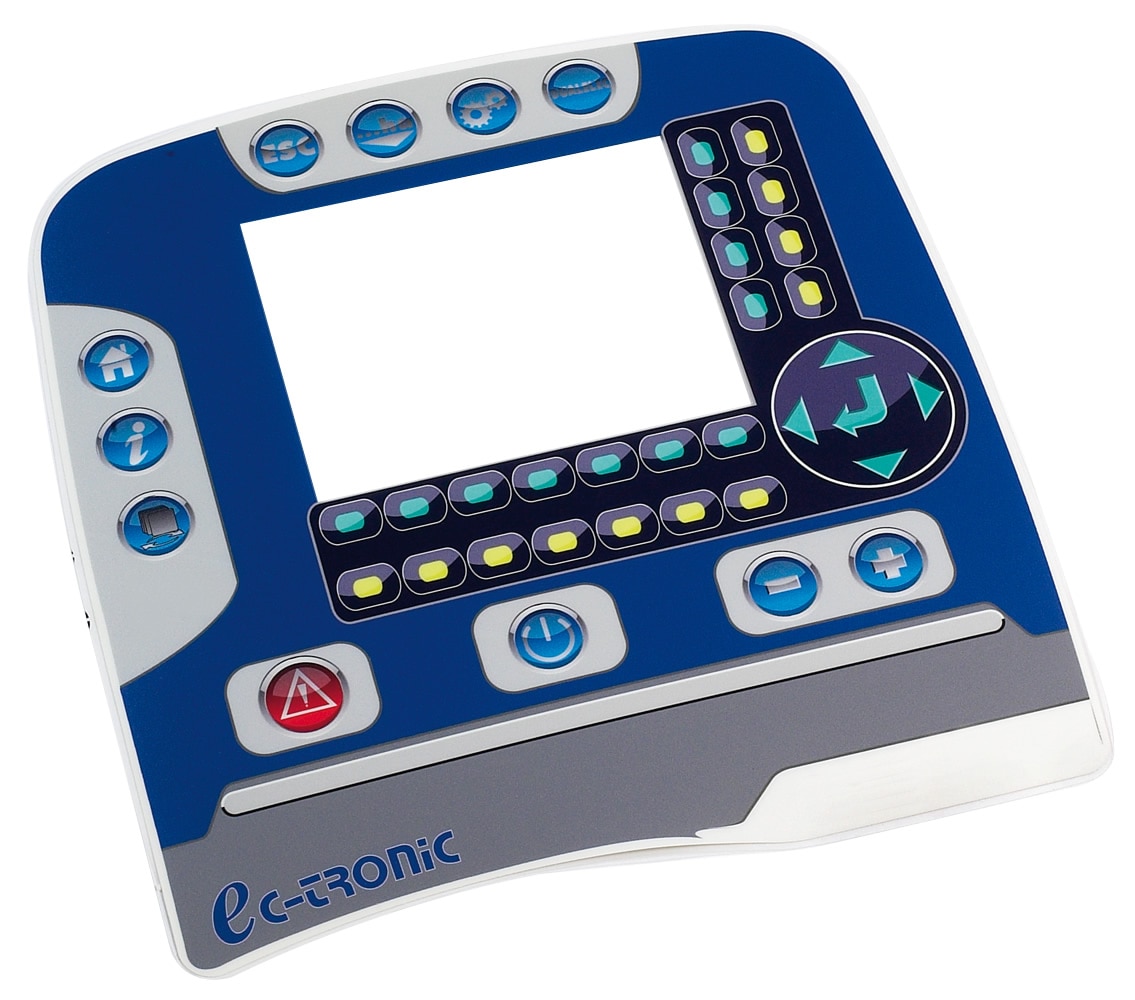Membrane Switch Manufacturer Focused on User-Centered Design
Comprehending the Relevance of Membrane Switch in Modern Electronic Devices and Their Applications
Membrane switches over function as a crucial component in modern electronics, offering an efficient interface for user interaction. Their customizable and lightweight nature makes them suitable for a variety of applications across diverse sectors. Recognizing their vital parts and benefits can offer insights right into their growing significance. As technology continues to breakthrough, the advancement of Membrane changes questions concerning their future applications and style advancements. What exists ahead in this dynamic area?

What Are Membrane Switches?
Membrane buttons are necessary elements in modern electronics, acting as interface that promote communication between gadgets and users. These switches contain a number of layers, including a visuals overlay, a sticky layer, and a circuit layer, every one of which job with each other to produce a durable and useful user interface. The design enables for a flat, low-profile service that can be customized relating to dimension, form, and visual look, making them appropriate for various applications, from customer electronics to clinical devices. The responsive feedback given by Membrane switches boosts user experience, while their resistance to dirt and moisture makes them suitable for challenging atmospheres. Furthermore, Membrane switches can include features such as backlighting and printed graphics, better expanding their functionality. Their versatility and effectiveness make them a preferred choice in markets where integrity and ease of use are vital, ultimately adding to the smooth procedure of modern-day electronic devices.
Secret Elements of Membrane Switches
While various elements contribute to the performance of a membrane layer button, three primary layers play considerable functions in its style and procedure. The leading layer, commonly made from a resilient polymer, acts as the user interface for customer communication, usually including published icons and graphics. Below this is the spacer layer, which maintains the required distance between the leading layer and the circuit layer. This spacer layer warranties that the switch triggers only when pushed, avoiding unintentional inputs. Lastly, the circuit layer has conductive traces that finish the electric circuit when the top layer is dispirited. These traces can be made from various materials, including copper or silver. With each other, these parts produce a trustworthy and robust device that is portable and functional, ideal for a variety of electronic applications, from home devices to medical devices. Comprehending these essential components is essential for valuing the overall capability of Membrane buttons.
Advantages of Using Membrane Changes

Membrane Switch Manufacturing Refine
Comprehending the Membrane button manufacturing process reveals the elaborate steps associated with creating these necessary elements. The procedure normally starts with the style phase, where layouts and specifications are developed making use of specialized software program. Following this, the visuals overlay is printed on a versatile substrate, typically utilizing high-resolution printing techniques to guarantee quality and precision.Next, the sticky layers are applied, which serve to bond the various parts with each other. The circuit layers, made from conductive inks or materials, are then published onto a separate substrate. These layers are carefully straightened and laminated flooring to produce a functional switch.After setting up, the buttons undergo examining to validate performance and sturdiness. Quality control actions are carried out throughout the process to recognize and correct any issues. The completed Membrane switches are packaged and prepared for circulation, ready to satisfy the demands of modern-day digital applications.
Applications of Membrane Switches in Numerous Industries
Membrane buttons are increasingly used across numerous markets, particularly in clinical equipment and consumer electronics. In the clinical field, they supply dependable control user interfaces for tools that require accurate operation. In consumer electronic devices, these switches boost individual communication by providing streamlined and receptive interfaces. Receptive Medical Devices Control
Countless contemporary medical tools make use of Membrane switches for streamlined procedure and improved user communication. These switches give a reputable, resilient interface for a variety of applications, consisting of analysis tools, individual surveillance systems, and medical instruments. Their customizable styles permit particular designs that can fit the special requirements of healthcare specialists, making sure instinctive navigation and reliable access to important functions. Additionally, Membrane switches are immune to contaminants, my website making them appropriate for sterilized environments. The responsive comments they provide can improve customer confidence, decreasing the risk of errors during vital medical treatments. Generally, the assimilation of Membrane switches in medical tools considerably adds to improved functional efficiency and individual safety in medical care her comment is here settings.
Consumer Electronics Interfaces
In the domain name of customer electronic devices, Membrane buttons play a critical function in boosting user interfaces across a wide variety of devices. These switches are important to items such as push-button controls, microwaves, and gaming consoles, offering a user-friendly and reliable user interface. Their layout enables for a seamless combination of graphics and capability, enabling manufacturers to develop streamlined, modern-day appearances without jeopardizing use. Membrane buttons are likewise understood for their longevity, typically holding up against extensive usage and exposure to different ecological problems. Additionally, they can integrate attributes like backlighting and tactile feedback, additional enhancing the customer experience. As consumer needs for innovative yet intuitive interfaces expand, Membrane switches over remain to be a necessary component beforehand electronic tool functionality.
Style Factors To Consider for Membrane Switches
Creating efficient Membrane changes calls for mindful attention to various variables that influence both functionality and individual experience. One vital consideration is the selection of materials, as they can influence sturdiness, tactile responses, and visual appeal. Picking an appropriate adhesive is essential for assuring long-term bond and resistance to ecological factors.In addition, the layout and style of the switch need to fit customer interaction, with switch sizes and spacing optimized for ease of usage. The unification of graphics and labeling need to prioritize quality and presence under numerous illumination conditions.Consideration of electrical characteristics, such as actuation pressure and switch level of sensitivity, will boost the responsiveness of the Membrane button. The layout needs to suit manufacturing procedures to ensure cost-effectiveness and timely manufacturing. Generally, a well-balanced design boosts both the individual and the performance experience of Membrane buttons in modern-day blog here electronic devices.

Future Fads in Membrane Switch Innovation
As innovation continues to develop, Membrane buttons are positioned to incorporate brand-new developments that will certainly improve their capability and application in numerous fields. One substantial pattern is the consolidation of versatile and resilient products, which will certainly raise the lifespan and integrity of these buttons. Improved surface area appearances and adjustable graphics are likewise expected, allowing for even more instinctive individual interfaces.Moreover, the combination of clever modern technology, such as touch-sensitive surface areas and haptic responses, is expected to boost user communication, making Membrane switches over a lot more engaging and responsive. In addition, advances in published electronic devices will certainly enable much more complex circuitry within thinner profiles, better broadening layout possibilities.Sustainability will likewise play an important role in future developments, as makers check out environmentally friendly products and manufacturing procedures. Overall, these patterns will ensure that Membrane switches over stay vital and pertinent in an interconnected and significantly digital globe.
Frequently Asked Questions
Exactly How Do Membrane Changes Compare to Traditional Mechanical Buttons?
Membrane switches deal advantages over traditional mechanical buttons, consisting of minimized dimension, lighter weight, and boosted durability. They commonly offer a secured surface area, boosting resistance to dust and dampness, making them ideal for varied applications.
What Products Are Commonly Utilized in Membrane Switch Building And Construction?

Can Membrane Switches Over Withstand Extreme Environmental Conditions?
Membrane buttons can hold up against severe environmental conditions, relying on their style and products. Top quality constructions frequently include sturdiness against temperature level fluctuations, moisture, and exposure to chemicals, making them ideal for different demanding applications throughout markets.
For How Long Do Membrane Switches Over Commonly Last Prior To Failing?
Membrane switches over commonly display a life expectancy varying from 1 to 10 million actuations, relying on aspects such as use regularity, environmental conditions, and manufacturing quality. Routine upkeep can extend their longevity and functional reliability considerably.
Are Membrane Changes Personalized for Details Applications?
Membrane switches are undoubtedly customizable for particular applications. They can be customized in layout, functionality, and dimension, allowing makers to satisfy distinct customer requirements and boost item visual appeals while maintaining operational performance and sturdiness. Membrane switches are essential parts in modern-day electronics, offering as individual interfaces that promote interaction between devices and individuals. The responsive responses given by Membrane switches improves customer experience, while their resistance to dust and wetness makes them suitable for testing settings. The incorporation of graphics and labeling ought to prioritize clearness and presence under numerous illumination conditions.Consideration of electrical qualities, such as actuation pressure and switch sensitivity, will enhance the responsiveness of the Membrane button. Boosted surface area textures and personalized graphics are also expected, enabling for more user-friendly user interfaces.Moreover, the assimilation of wise modern technology, such as touch-sensitive surface areas and haptic responses, is anticipated to enhance user communication, making Membrane changes more engaging and receptive. Membrane switches over deal benefits over standard mechanical buttons, including reduced dimension, lighter weight, and improved sturdiness.